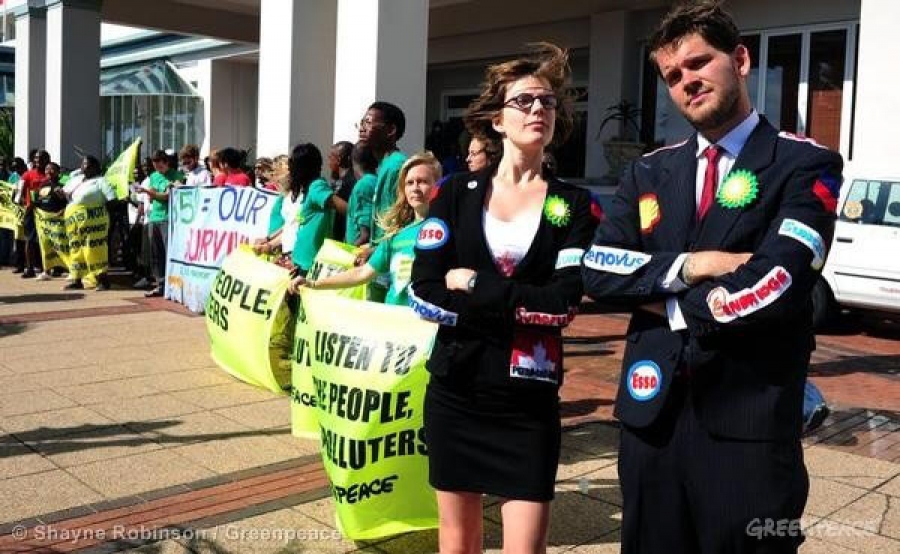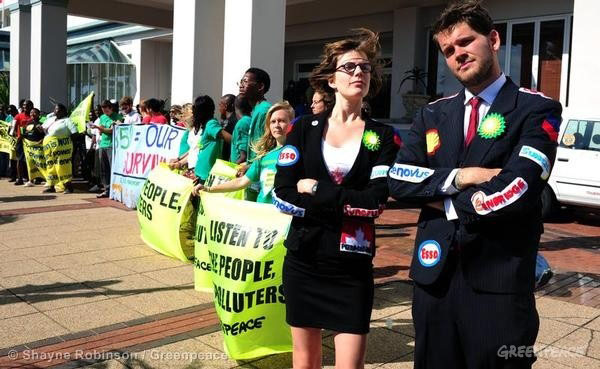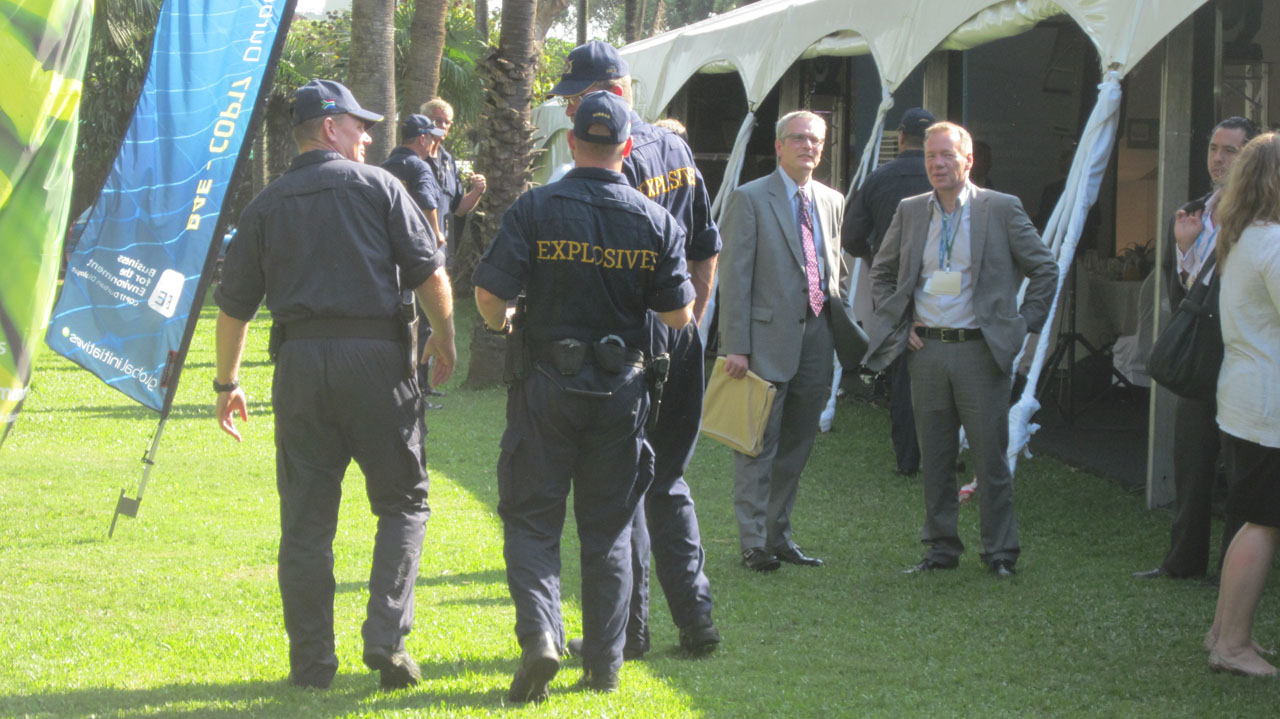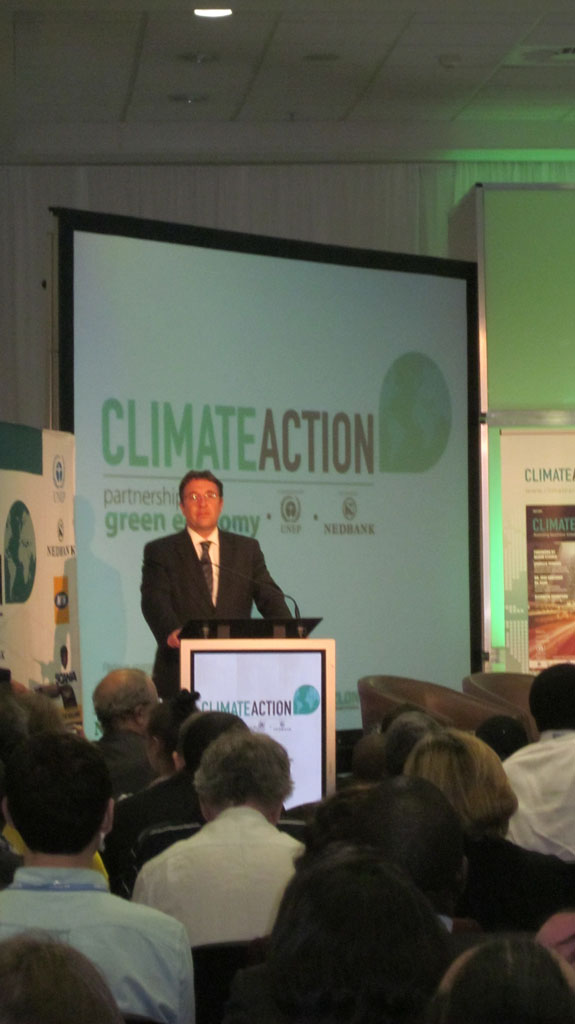COP17’s Failings and Where Our Poker Chips are Better Played
Video
In this guest post for Buildipedia, Emma Stewart of Autodesk shares her experiences from Durban, where the 17th Conference of the Parties (COP17) to the United Nations Framework Convention on Climate Change (UNFCCC) recently took place. What kind of international progress can we expect to happen as a result of this conference, and what can we do if that progress doesn't seem quite 'progressive' enough? Emma offers some insight concerning how climate change can truly be addressed.
If it had been an exercise in cultural diplomacy, I would declare it a success. I shared a shuttle bus home with a Cameroonian Member of Parliament up for re-election. I sweated in the South African heat with Tata’s sustainability head, whose job of influencing 450,000 employees makes mine look like child’s play. I had a drink with the CEO of the Carbon Disclosure Project in the world’s most impressive soccer stadium. I marveled at South Africa’s sparkling new airports and highways, welcome leftovers from the World Cup 2010 (unlike the sound of vuvuzelas, which I still hear ringing in my ears). I encountered climate change education everywhere in Durban, even at the airport baggage carousel. I tried a few words of Zulu only to find that “COP17” translated into every local tongue. I chuckled at UN Security’s attempt to “lock down” the Botanical Gardens in advance of Secretary Ban Ki-Moon’s address. And, while Greenpeace protested our proximity to the talks, sustainability business leaders met at various “side events” to cheer on one another’s (admittedly incremental) progress.


Unfortunately, as an exercise in state diplomacy, it was an embarrassment. Despite pleas from UNFCCC Secretary Christiana Figueres, forceful demands for aggressive national targets from UNEP head Achim Steiner, and insistence that the world will not accept failure in Durban from UN Secretary Ban Ki-Moon, the power resided not with the UN officials but with the government delegations, who acted like children learning poker, waiting for others to place their bets, never taking the risk to raise the stakes for all. (Canada even bragged that it was not subject to the same rules and pouted in the corner with its buddy, the eternal COP antagonist, the United States.)


But this is not the same old poker table, replete with the usual suspects of Europe, the US and Japan. Instead, the first round was dealt by the largest emerging economy emitters, Brazil, South Africa, India and China, who in their joint press conference, demanded a 14-year renewal of the legally binding Kyoto Protocol. All eyes were on China when its chief negotiator, Xie Zhenhua, said he would consider China’s involvement in an expanded Protocol (China has already set GHG intensity targets in its 12th Five Year Plan), as long as industrialized countries stepped in to help developing countries foot their adaptation bills. The latter looked promising, as the mix of loans vs grants for the $100 billion per year “Green Climate Fund” was hashed out for launch in 2020. (Though I’m certain I wasn’t the only one to notice the specter of the Euro-zone crisis deepening and the austerity belt tightening even as these funds were being negotiated.). At a separate poker table with smaller “antes”, heavily forested countries like Indonesia and Brazil argued successfully for payments to reduce deforestration, likely through additional carbon credit schemes. Meanwhile, those dealt the worst hand in terms of climate vulnerability refused to leave the talks until substantial progress was made. The Alliance of Small Island States, many of which are predicted to disappear under a rising sea, put it bluntly: “We have not come here to negotiate ourselves out of existence”.

Up until the final minutes, it seemed the single point of accord was on where to host next year’s COP meeting: in Qatar, a country literally built on oil. But in the wee hours of the final night, the 194 countries agreed to the Durban Platform for Enhanced Action, a roadmap to bring all major GHG emitters under a single legal treaty by 2020. Unfortunately, this is far past the date by which emissions must be curbed and on the decline, according to the latest research on climate stabilization.
So to sum up, global emissions are up 36% since the Rio Summit in 1992 declared them a threat to development , mainly due to the fact that the Kyoto Protocol doesn’t require reductions from the US or developing countries. And even if all the pledges made at and after last year’s COP were met in full, we’re still 5-7 gigatons short of the 44 gigaton target for 2020 to have any chance at stabilizing the climate.
So now is the time that we must leave the poker players to their game, and walk out of the policy casino to breathe the fresh air of pragmatic leadership. Specifically, city/local governments and the infrastructure industry can step in where global-level negotiations fail us.
City/Local Governments:
City and local governments are at the forefront of climate change impacts, predicted by The World Bank to foot the bill for 80% of the $80-100 billion annually in adaptation costs. Meanwhile, as ICLEI points out, the urban structures we have built in the past 4000 years must essentially be built again in the next 40 years to meet the challenges of urbanization and to match demographic and consumption trends. Yet despite their needs and potential contributions, UN protocols and mechanisms have essentially overlooked city and local governments (e.g. only a tiny fraction of the Clean Development Mechanism awards were granted to city projects ). Yet thousands of mayors continue to attend COP meetings, and this year, they passed the Durban Adaptation Charter for Local Governments. The charter commits them to a number of things that national governments have failed thus far to orchestrate, including measurable, reportable and verifiable registers of emissions (see CDP Cities, cCCR, and Copenhagen World Catalogue of Local Climate Commitments); mainstreaming adaptation as a key component of all planning measures; and prioritizing ecosystem services as core municipal green infrastructure. Rio de Janeiro, for example, is at the forefront of securing support for its endeavors in the run-up to its triple whammy of global events (Rio+20, World Cup, and Olympics), by partnering with the World Bank to craft city-wide carbon credits; examining obstacles to stipulating green practices among its chosen vendors; and collecting and analyzing millions of performance data points in its high-tech Center of Operations.
The Infrastructure Industry:
As every abatement cost curve tells us, the cheapest (or better yet, most lucrative) carbon reductions come from upgrading existing buildings and infrastructure. And that’s where the smart money should flood. Even if the Green Climate Fund takes flight in 2020, it will lag behind the trillions that will be spent before then by the private sector in clean energy infrastructure and building upgrades. Some of this is being spurred by public loan guarantees, such as the new $4 billion announced by President Obama on December 2 for energy upgrades to public and private buildings (arguably his only contribution to the climate summit). More must be spurred through larger allocations of R&D spend and creative financial mechanisms with built-in risk mitigation, such as those being posited by The Carbon War Room for building efficiency retrofits. And it’s politically palatable even in the jobless industrialized nations -- 12 direct and indirect jobs and 5 indirect jobs per million dollars of output, according to the University of Massachusetts, Amherst.
Admittedly, to date, city-level progress has been highly patchy and the infrastructure industry has done a lackluster job at scaling up any exemplary experiments. But they are at least actively scouring the landscape for opportunities and building upon one another’s work…more like a game of World of Warcraft where players team up to accomplish the most difficult of tasks. Next year, when we must hash out the terms of a future globally binding treaty on climate change, let’s show up at the UN with a hand filled with iconic projects, not poker cards. And insist that they stop gambling with the future.

